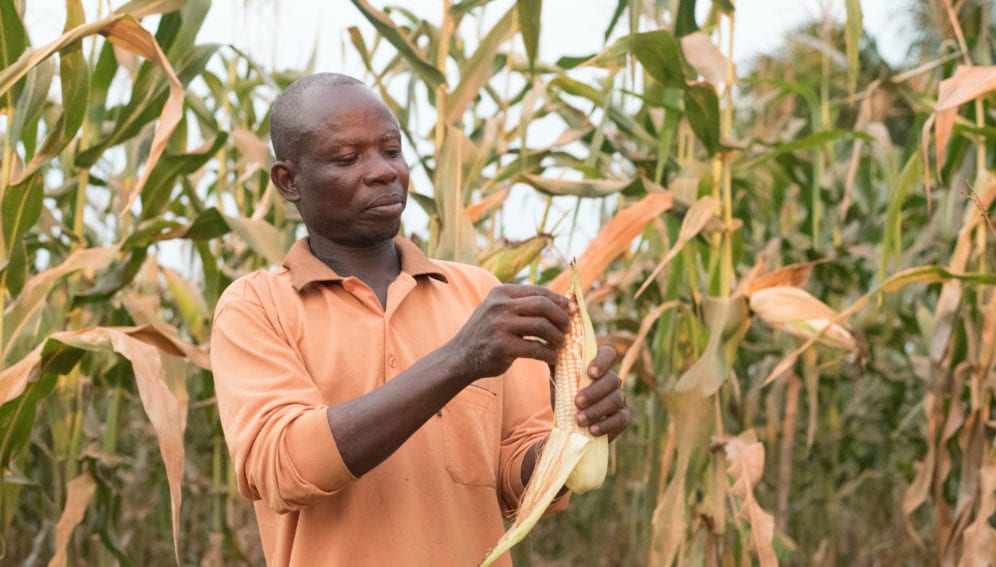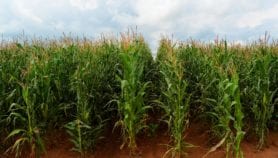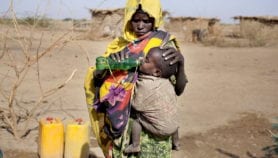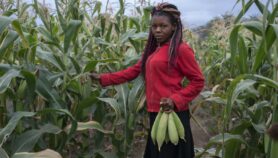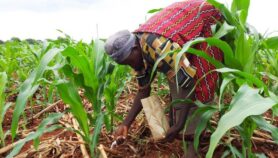By: Boaz Keizire
Send to a friend
The details you provide on this page will not be used to send unsolicited email, and will not be sold to a 3rd party. See privacy policy.
That food insecurity in Africa is worsening has been receiving more attention, and climate change is often viewed as the main culprit.
But one of the constant threats to the continent’s food security, and one that receives insufficient public attention is aflatoxin contamination.
Aflatoxins are naturally occurring harmful toxins produced by the fungi Aspergillus flavus and Aspergillus parasiticus. The contaminant is spread throughout Africa, especially because the continent is a high producer and consumer of starch-based food crops such as maize and groundnuts. Such crops are largely susceptible to the fungi.
Significant threat to health
Because of the pervasive nature of aflatoxins, the fungi continue to pose a significant threat to both human and animal health. There have been several well-publicised outbreaks of acute aflatoxicosis — the disease caused by aflatoxin — in Sub-Saharan Africa, including the deaths of 125 Kenyans in 2004. On average, 26,000 Africans living in Sub-Saharan Africa die of liver cancer every year through chronic aflatoxin exposure, reports the International Food Policy Research Institute. Nigeria alone is said to lose at least 5,000 lives to aflatoxicosis every year. Furthermore, about US$670 million is lost each year from rejected export trade because of aflatoxin contamination.
“It is now imperative that key institutions such as those from the agriculture, health and governance sectors act together.”
Boaz Keizire, The Alliance for a Green Revolution for in Africa
Such numbers confirm that aflatoxins contamination signifies severe health implications, in addition to limiting the income generation prospects of African farmers. This is especially the case in the rural areas of Sub-Saharan Africa, where aflatoxins are heavily linked to post-harvest losses.
Concerted efforts needed
To overcome the economic and social burden of aflatoxin contamination, it is now imperative that key institutions such as those from the agriculture, health and governance sectors act together to first educate the public on the effects of the fungi, and to provide the tools and skills needed to control it.
Among the strategies being developed to fight aflatoxin contamination is Aflasafe, a biological control developed by the International Institute of Tropical Agriculture to prevent the fungi in soils from reaching maize cobs while in the fields. The Alliance for a Green Revolution in Africa is now working with governments and the private sector players to promote and commercialise the technology, which is complemented by a new ozone treatment to degrade the fungi on grains already attacked. Ozone is a powerful oxidising agent with a demonstrated ability to reduce populations of bacteria and fungi.
But even with the availability of technologies to fight the fungi, for a widespread impact, it is important that effort is directed towards policy formulation and public education. The Partnership for Aflatoxin Control in Africa was established in 2010 at the 7th Comprehensive Africa Agriculture Development Program Partnership Platform gathering in Yaoundé Cameroon, and is leading the awareness efforts at both regional and national levels and is quickly gaining the support of various governments.
Ghana, for instance, in December 2018, inaugurated the National Steering Committee for Aflatoxin Control, with support from the Alliance for a Green Revolution in Africa. The Committee, which is being coordinated by the Science and Technology Policy Research Institute in Ghana will, among other duties, assist in the development of the national policy and technical regulation for aflatoxin control.
“For a widespread impact, it is important that effort is directed towards policy formulation and public education.”
Boaz Keizire, The Alliance for a Green Revolution for in Africa
In its practice, this committee will propose recommendations for appropriate management practices such as timely planting, weed and pest control, early harvesting, good sanitation, proper cleaning and sorting of agricultural produce.
Private sector engagement crucial
While the Alliance for a Green Revolution in Africa is working in support of the design of aflatoxin control policy and technical regulation to boost the control efforts around the continent, it is important to pursue private sector engagement. The input of the private sector will inform a demand-driven approach that influences the behaviour of key actors such as farmers by setting the standards of produce, which in turn translates to better aflatoxin management techniques.
In addition, the establishment of a strong regulatory system remains key to preventing dangerous crops from getting to the marketplace. However, the same regulations must speak to the quality of inputs supplied to the millions of smallholders across Africa.The ultimate goal is to have in place a policy-driven approach that brings together all the players across the value chain in the pursuit of long-term solutions to tackle aflatoxin contamination in Africa.
Boaz Keizire is the head of policy and advocacy at the Alliance for a Green Revolution in Africa (AGRA) and 2017 Aspen New Voices Fellow. He can be reached at [email protected]
This piece was produced by SciDev.Net’s Sub-Saharan Africa English desk.
References
[1] Regional overview of food security and nutrition. Addressing the threat from climate variability and extremes for food security and nutrition (FAO and ECA, 2018)
[2] Eduardo Azziz-Baumgartner and others Case–control study of an acute aflatoxicosis outbreak, Kenya, 2004 (Environmental Health Perspectives, 9 August 2005)
[3] Aflatoxins finding solutions for improved food safety (IFPRI, 2013)
[4] African countries suffer staggering losses each year due to aflatoxins (Neogen Blog, 24 January 2018)


